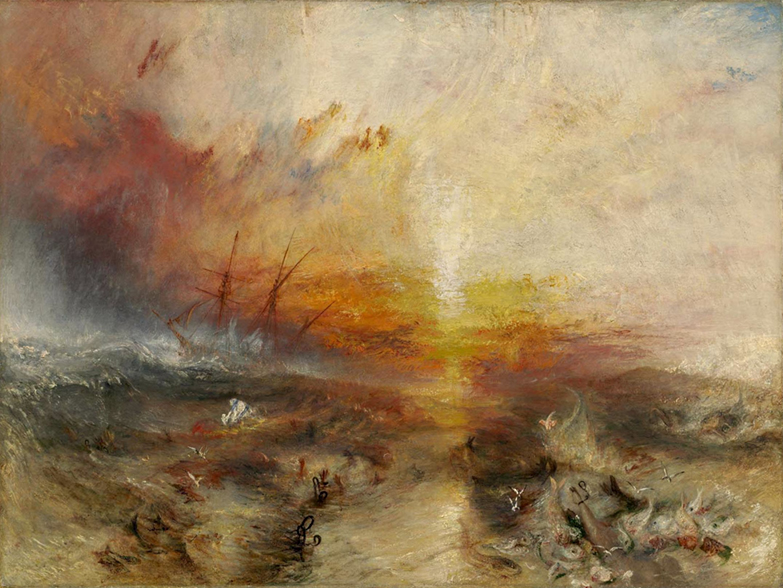list of 10 images to put in an order: #2 'slaveship ZONG by J.M.W. TURNER'
Start with the page of which you, or your group think it reflects the idea 'Awareness' in the best way, and then down to the page with the least meaning

'The Slave Ship' or 'Slavers Throwing Overboard the Dead and Dying — Typhoon Coming On'
Captains of slave ships carrying people in chains from Africa across the Middle Passage into slavery in the New World would throw the sick and dying overboard. The captain and the owners could then collect insurance for the lost “cargo”; there was no compensation for the lives of human beings lost to illness.
In 1783, the English slave ship Zong got lost, and sixty slaves and seven crew members died from illness. Thinking that the remaining slaves would become too weak to fetch good money in the slave auctions in Jamaica, the captain ordered 132 African men, women, and children to be shackled and thrown into the sea. One man survived to tell the tale. The case came to the courts in England. The insurance company won and did not pay the claim. No one faced any prosecution for this crime.
Turner painted this image, one of his most famous paintings, in 1840. The British Parliament had abolished the slave trade across its Empire thirty-three years earlier. Slavery was still flourishing, however, in countries ruled by Europe and in the United States. Turner offered this painting as part of the campaign against slavery.
While the captain of the Zong was not punished, in Turner’s depiction, the captain and crew of the slave ship all face divine fury. Notice at the bottom of the painting the mangled and shackled limbs of the murdered slaves, and above them, the slave ship, a ghost ship, empty, its captain and crew thrown into the maelstrom.
When the painting was first shown in the British Royal Academy in 1840, Turner attached this verse he himself had written in 1812:
"Aloft all hands, strike the top-masts and belay;
Yon angry setting sun and fierce-edged clouds
Declare the Typhoon's coming.
Before it sweeps your decks, throw overboard
The dead and dying — ne’er heed their chains.
Hope, Hope, fallacious Hope!
Where is thy market now?"
Much more on this painting and on 'Zong' here at Wikipedia
see slide 04-02
